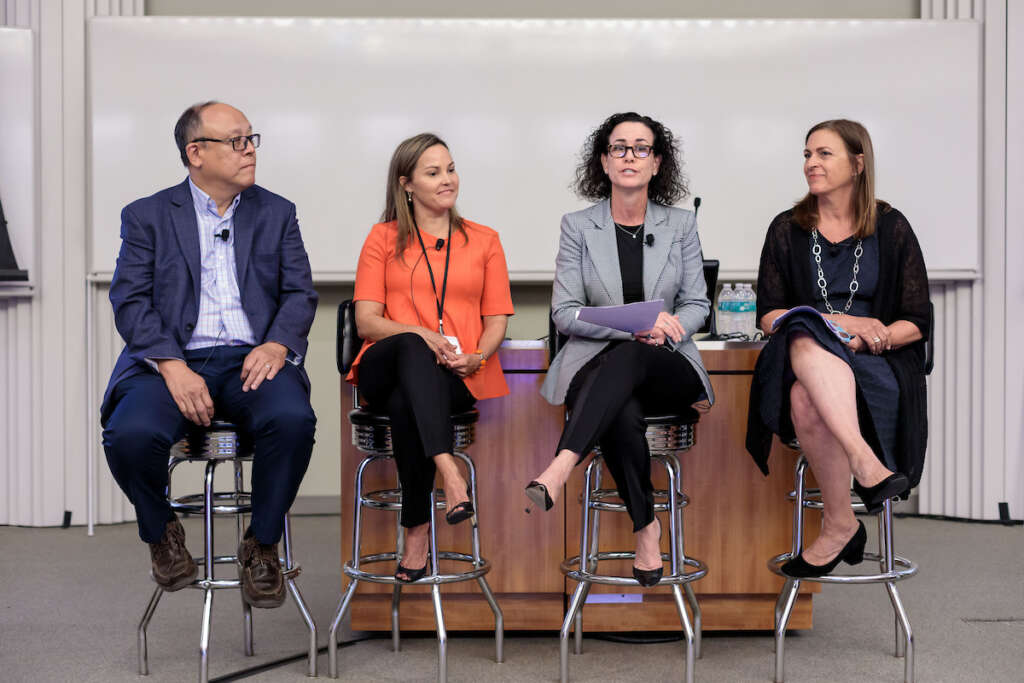Valerie Conn is executive director of the Science Philanthropy Alliance
A $100 million gift is what’s known in development circles as a “transformative gift” – such a gift is raised by an institution infrequently and can make a huge difference for science at a university. The University of Chicago, where I used to work, recently received such a gift from the Duchossois family, to establish a new institute that will focus on the science of wellness. The Duchossois Family Institute seeks to accelerate research and interventions based on how the human immune system, microbiome, and genetics interact to maintain health.
At a recent meeting of the Science Philanthropy Alliance, a panel of speakers shared how this gift came about. The panel included Ashley Duchossois Joyce, president of the Duchossois Family Foundation, and University of Chicago Professor Dr. Gene Chang, VP and Associate Dean Laila Rashid, and VP for Alumni Relations Sharon Marine. Their experience provides insights into how universities can work with families to create transformative gifts for science, including discovery science.

from left to right:University of Chicago Professor Dr. Gene Chang; president of the Duchossois Family Foundation Ashley Joyce, University of Chicago VP for Alumni Relations Sharon Marine, and University of Chicago VP and Associate Dean Laila Rashid
The Duchossois family’s relationship with the University of Chicago Medicine goes back 40 years, beginning when a family member was treated for cancer. Since then, the family has given numerous gifts across the university.
Ashley noted that the university did a good job supporting the relationship with the various generations of family members by providing updates and inviting them to events. “Staying in touch with donors is so important,” she said. “Our ongoing relationship with the University of Chicago was why we reached out to the university when we were considering options for our philanthropy.”
From the university’s perspective, Laila said that listening to the family and getting to know and understand the new generation who were becoming active with the foundation was important. While past giving had focused on cancer, the new generation was eager to look at opportunities beyond cancer. “We had to stop thinking about how the family gave in the past, and offer new appropriate ideas based on the family’s interest.”
The family had been considering how to be more strategic in their giving and were exploring areas such as wellness and education. They wanted to support health through a preventative approach rather than just treating illness, and to do so by funding new science. They wanted to create opportunities to take risks, because they felt that incremental science would not get to a breakthrough. And they wanted to fund research that the NIH wouldn’t fund, research that would free scientists to think boldly.
“We were most intrigued by the question, ‘What if?’” said Ashley.
Once the University of Chicago understood where the family was coming from, the faculty began to be excited about how to unify the ideas coming from the family into a gift that would be truly transformative for science and health. Laila and the faculty realized that the common thread was the need for basic scientific research. Ashley says that her family calls this “new science.”
Gene explains how the faculty went back to fundamental questions such as “what is health?” and “how do we monitor health?”
As the ideas began pouring in from the faculty, the family became even more enthusiastic. One opportunity that the family was especially interested in was embedding experts from the university’s Polsky Center For Entrepreneurship at the Duchossois Family Institute to identify ideas that could be commercialized, which could maximize benefits from discovery science discoveries.
Said Ashley, “The more we met, the more the family got excited, so much so that we decided to double our gift.”
It is clear that working with the Duchossois family on their gift to the University of Chicago required a lot of time and effort. It was 18 months between the first meeting and finalizing the agreement. It took listening, managing the relationship, out-of-the-box thinking, and working with a diverse set of faculty and staff. Ultimately, the relationship and ideas blossomed into a gift that has the potential to transform how we think about health and wellness.


